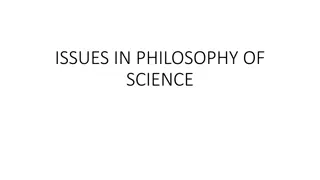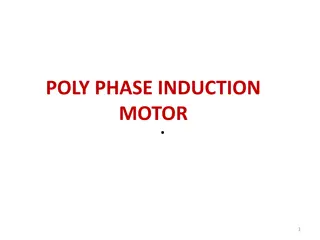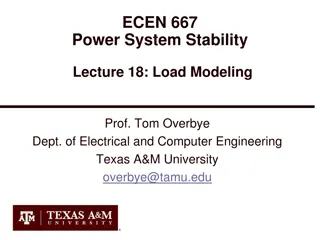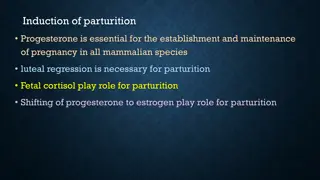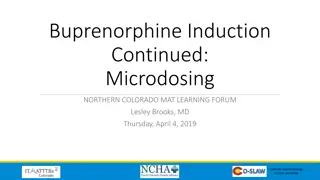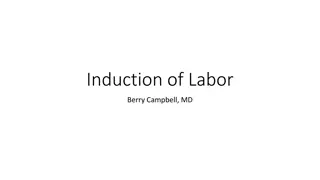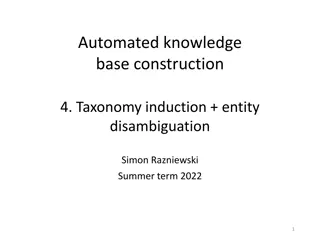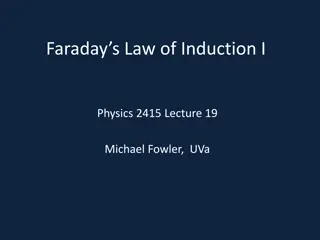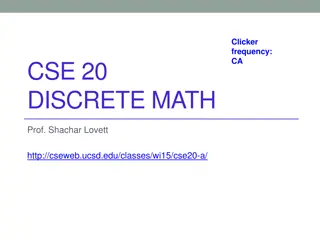Deriving Induction Principles Using Parametricity
Roadmap to deriving induction principles using parametricity, challenges involved, logic of correct reasoning, study of proof assistants, and generating induction principles automatically in Coq. Exploring parametricity translation from types to relations and methods for deriving induction principles utilizing parametricity.
Download Presentation

Please find below an Image/Link to download the presentation.
The content on the website is provided AS IS for your information and personal use only. It may not be sold, licensed, or shared on other websites without obtaining consent from the author.If you encounter any issues during the download, it is possible that the publisher has removed the file from their server.
You are allowed to download the files provided on this website for personal or commercial use, subject to the condition that they are used lawfully. All files are the property of their respective owners.
The content on the website is provided AS IS for your information and personal use only. It may not be sold, licensed, or shared on other websites without obtaining consent from the author.
E N D
Presentation Transcript
ALGEBRAIC COMBINATIONS We have seen that it is fairly easy to compute the derivative of a simple function using the definition of the derivative. More complicated functions can be difficult or impossible to differentiate using this method. So we ask . . . If we know the derivatives of two fairly simple functions, can we deduce the derivative of some algebraic combination (e.g. the sum or difference) of these functions without going back to the difference quotient?
Note: We are going to assume that all of the functions we talk about in this PowerPoint presentation are differentiable.
THE DERIVATIVE OF A CONSTANT TIMES A FUNCTION ( ) ( h ) + ( ) ( ) kf x h kf x d dx ( ) = ( ) lim h kf x 0 Can we do this? Why? ( ) + ( ) ( ) f x k f x h h = lim h 0 ( ) + ( ) ( ) f x f x h = lim h k h 0 ( ) = kf x
WHAT DOES THIS MEAN? 23 = ( ) f x 3 x ) ) ( ( d dx d dx 2 3x 2 2 13 13 = = = 3 3 x x 2x 3 3 3
THE DERIVATIVE OF THE SUM OF TWO FUNCTIONS ( ) ( ) + + + + ( ) ( ) ( ) f x ( ) g x f x h g x h h d dx ( ) + = ( ) f x ( ) g x lim h 0 + + + ( ) ( ) ( ) f x ( ) g x f x h g x h = lim h h 0 Can we do this? + + ( ) ( ) f x ( ) ( ) g x f x h g x h = + lim h h h 0 + + ( ) ( ) f x ( ) ( ) g x f x h g x h ( ) ( ) = + f x g x = + lim h lim h h h 0 0
THE DERIVATIVE OF THE DIFFERENCE OF TWO FUNCTIONS ( ) ( ) + + ( ) ( ) ( ) f x ( ) g x f x h g x h h d dx ( ) = ( ) f x ( ) g x lim h 0 + + + ( ) ( ) ( ) f x ( ) g x f x h g x h = lim h h 0 + + ( ) ( ) f x ( ) ( ) g x f x h g x h = lim h h h 0 + + ( ) ( ) f x ( ) ( ) g x f x h g x h ( ) ( ) = f x g x = lim h lim h h h 0 0





